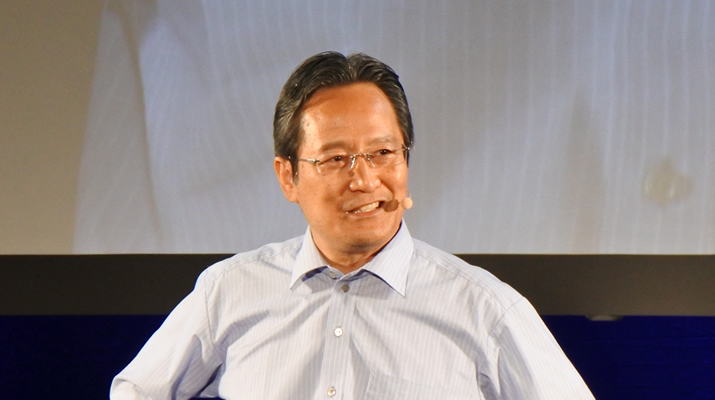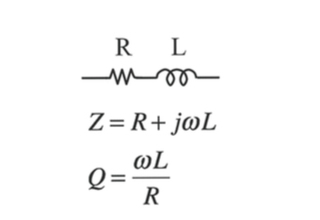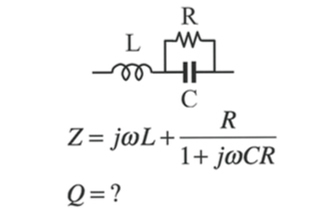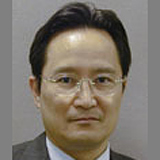
ここからコンテンツです。

"Resonance Q Theory" – A Breakthrough Discovered by TUT
Corroborating technology with science supporting implementation of wireless power supply By Takashi Ohira
"Societal implementation" is defined as developing practically oriented research designed to solve problems in society. As such, it is assumed that “research results” have been obtained in order for this integration to succeed. What comes to mind when you hear the phrase “research results?” Perhaps you picture hardware such as a newly developed machine or an electronic device? Or do you think of software for computers and information processing? These are all examples taken from our everyday lives which are the fruit of invention and manufacturing research. The R&D departments of corporations also produce these kinds of products. What kinds of research results does the world expect from Toyohashi University of Technology?
Corroborating technology with science. This is the basic concept behind science and technology. Instead of stopping at just manufacturing, we develop breakthrough theories that no one else has discovered. This is the true result of scientific and technological research. Needless to say, new theories are not created every day. Researchers need to review existing scientific theories and generalize basic theories found in our current textbooks in order to move on to higher-level concepts. Below, we will have a look at one example of a breakthrough theory that will force textbooks on electronic circuits to be rewritten.
If you open a textbook on electronic circuits for high school or university, you will come across the following equation:

This is a Q factor formula for a series circuit comprising a resistor and a coil shown in Fig. 1. Students generally memorize formulae and how to apply them verbatim. It is important to become familiar with equations such as the one above when you first start your studies, so this technique is somewhat useful. However, once you start to use these equations, you begin to wonder why they are written as they are. There is always some reasoning behind any physical phenomena. Finding out what that is, or “corroborating technology with science” is the true mission of technical universities.
Now, let’s look at Fig. 2. A condenser has been added to the circuit. We have learned that resonance occurs between a coil and a condenser in our last year of high school. The problem to solve here is to “calculate the Q factor in the circuit’s resonance state.” Although the problem itself is quite simple, it actually requires a lot of thought. Textbooks do not readily provide a formula that can be used to solve this problem. So, what are you supposed to do?


In order to solve this problem, you need to take a step back and really think about what a Q factor is. Throwing away our preconceived notions and ignoring general knowledge, we reached the concept of “natural logarithm impedance.” This is expressed as follows:

At first glance, this equation seems mysterious or enigmatic to solve, and is likely to be labeled as unorthodox. Generally speaking, Z is a complex number, and so ζ is also a complex number. By using this ζ, the Q factor in a resonance circuit of any structure can be determined by using the following equation:

Here, ωo represents resonance angular frequency of the circuit, and the two vertical lines represent the absolute value of the complex number. This theoretical expression was used in our IEEE journal and was selected for a Commendation for Science and Technology by the Minister of Education, Culture, Sports, Science and Technology. The physical meaning of the logarithm impedance ζ is explained in “What in the world is Q?” (Ohira, 2016).
First, try and calculate the Q factor of the circuit shown in Fig. 1 using the above equation. You will need to derive the complex numbers part way through, and our second-year students learn how to do this. If your answer matches the following textbook equation, you have passed the first stage:

If you were able to calculate this, have a go at the problem in Fig. 2. The answer can be found in “Enigma on resonant quality.” (Ohira, 2017)
This theory applies not only to resonance circuits, but can also be expanded to various functional circuits such as those for filters or oscillators. The discovery of Log Z has given us engineers the ability to derive a Q factor equation under a resonance state from a given circuit diagram with just a pencil and paper.
The discovery of this resonance Q theory will contribute greatly to R&D into revolutionary systems that use the principle of resonance, such as those for telecommunications and wireless power transfer, and the implementation of those research results into society.
Editor's Note
On Nobember 29th, TUT and DENSO unveiled the result of their cooperative venture - a compact high-speed robot that conveys parts on DENSO's assembly line. Electrical power is supplied wirelessly from the guideway to the robot by means of a practical application of "Resonance Q Theory". DENSO is looking to use this robot in not only in its own factories, but also planning to sell it as part of a logistics systems that can operate non-stop around the clock.
https://www.nikkan.co.jp/articles/view/00452670 (Japanese version only)
References
- [1] Takashi Ohira, “What in the world is Q?” IEEE Microwave Magazine, vol.17, no. 6, pp.42-49, June 2016.
- [2] Takashi Ohira, “Enigma on resonant quality,” IEEE Microwave Magazine, vol.18, no.2, p.119, March 2017.
ワイヤレス給電の実現を支えるTUT発の「共鳴Q理論」
技術を科学で裏付ける: 世界中の誰も見いだせなかった画期的理論を構築By 大平 孝
「社会実装」とは得られた研究成果を社会問題解決のために応用展開することとされています。ということは、社会実装のためには、当然ながら「研究成果」が得られていることが前提となります。研究成果と聞いてどのようなものを思い浮かべますか? 新しく開発した機械装置や電子デバイスなどのハードウェアでしょうか。それとも、コンピュータ・情報処理などのためのソフトウェアでしょうか。これらはいずれもものづくりという意味でわかりやすい研究成果といえます。このようなものづくりは企業のR&D部門でも行われています。豊橋技術科学大学ならではの研究成果とはどのようなものだと期されているのでしょうか。
技術を科学で裏付ける。これが技術科学の基本コンセプトです。単なるものづくりに満足するのでなく、これまで世界中の誰も見いだせなかった画期的理論を構築。それが技術科学の研究成果です。当然ながら、新しい理論構築は一朝一夕にできるものではありません。既存の科学を見つめ直し、現状の教科書にある基本理論をさらに上位概念へ一般化することが求められます。電気回路の教科書を書き直すレベルの画期的な理論構築の例を以下に紹介します。
高専・大学課程の電気回路の教科書を開くと、

という公式が見つかります。これは図1に示す抵抗とコイルからなる直列回路のQファクタ公式です。とかく公式というものは天下り式に暗記して、その使い方を覚えるのが通常です。最初のうちは使い慣れることが大切なので、それはそれで意味があります。でもしばらく使っているうちに、その公式がそもそもなぜそうなっているのか理由を知りたくなってきます。どんな物理現象にもその背景になんらかの本質が潜んでいるはずです。それを見つけだして「技術を科学で裏付ける」これこそまさに技術科学大学のミッションです。
図2を見て下さい。コンデンサが1個追加されました。コイルとコンデンサで共鳴現象が生じることは高校3年の物理で習います。問題は「この回路の共鳴状態におけるQファクタを計算せよ」です。問題自体は単純。にもかかわらず意外と奥深い内容があります。教科書を見てもすぐに使えそうな公式は見あたりません。はて、どうすればよいのでしょうか?


この問題を解くためには、Qファクタとは一体なんだろうということを純粋かつ冷静に考える必要があります。先入観を捨て、常識にとらわれず、そして最終的に到達したのが「自然対数インピーダンス」という概念です。数式で表すと

です。一見なんとも不可解で、ともすれば異端ともとられそうですね。一般にZは複素数なのでζも複素数です。このζを用いれば、どんな構造の共鳴回路でもQファクタが

で求まります。ここでωoは回路の共鳴角周波数、縦棒2本は複素数の絶対値を示します。この理論式がIEEE論文誌に採択され、文部科学大臣表彰に選ばれました。対数インピーダンスζの物理的意味が文献[1]に説かれています。
まず最初に、上式を使って図1の回路のQファクタを計算してみて下さい。途中で複素数の微分演算が必要ですが、それは学部2年生の教養数学で学習するレベルです。計算結果が教科書の式

と一致すれば第1関門突破です。これができれば、次に、図2の問題にアタックして下さい。正解は文献[2]に開示されています。
この理論は共鳴回路のみならずフィルタや発振器など様々な機能回路に発展可能です。Log Zの発見により、私たちエンジニアは、与えられた回路図から紙と鉛筆だけでその共鳴状態でのQファクタ公式を導き出す技を得たのです。
情報通信やワイヤレス電力伝送など共鳴原理を活用する革新的システムの研究開発、そしてそれら研究成果の社会実装に、この技科大発の共鳴Q理論が大きく貢献するのです。
Researcher Profile

| Name | Takashi Ohira |
|---|---|
| Affiliation | Department of Electrical and Electronic Information Engineering |
| Title | Professor / Director of Research Center for Future Vehicle City |
| Fields of Research | Wave Engineering / RF Circuits / Mobile Power Transfer |
ここでコンテンツ終わりです。
